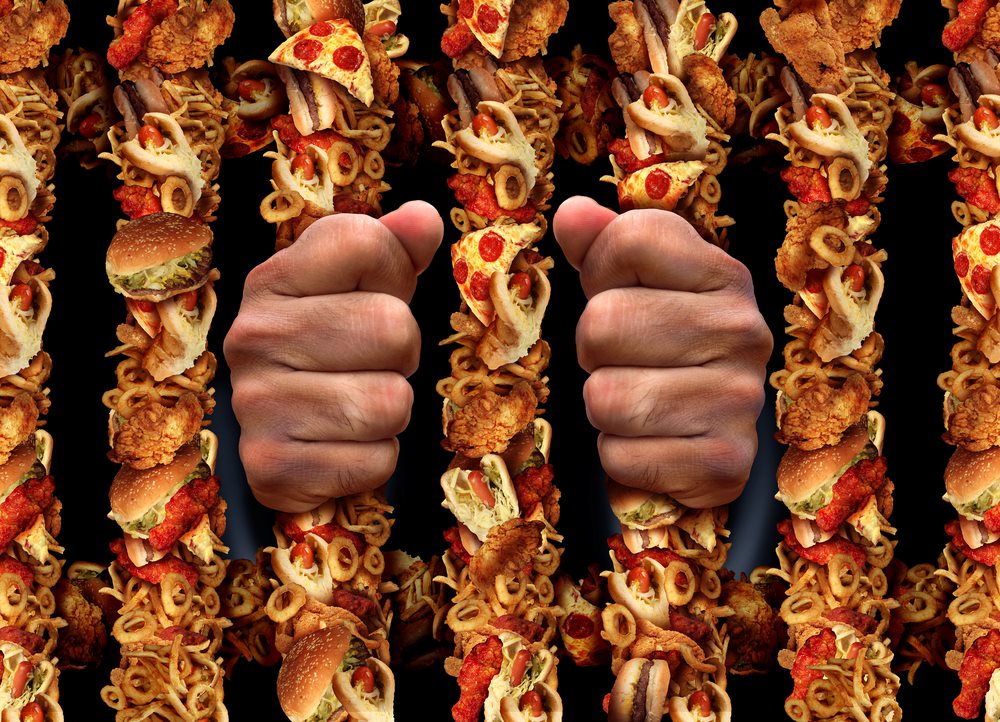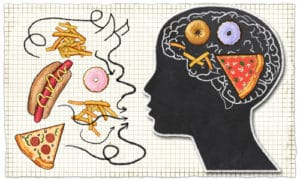In a sense, we are all addicted to food. Think of how you feel when you can’t eat. You start craving things and the longer your cravings go on, the more physically and emotionally uncomfortable you get. It is similar to many other disorders, including food addiction, binge eating disorder, bulimia, compulsive binge eating and other nutritional and eating disorders.
As we all know, nutrition is essential for survival and unlike other addictive behaviors, it is perfectly healthy to look forward to eating and expecting pleasure from food over and over again. But a few features distinguish normal or occasional binge from food addiction.
Most addicting foods
Foods that people are likely to overeat tend to have something in common. They often contain a strong combination of carbohydrates (such as refined grains and/or sugar) and fat. This combination is not as common in nature. For example, rice is high in carbohydrates but low in fat, while nuts are high in fat but contain minimal carbohydrates. However, processed food companies can mix ingredients and chemically create exaggerated flavors to create a sensation that’s appealing enough to keep you wanting more.
Like addictive drugs, tempting foods trigger brain chemicals such as dopamine. When people feel pleasure as a result of elevated dopamine, they feel the urge to revisit the sensation through the same food that caused it in the first place. Reward signals from delicious foods can invalidate other satiety and satisfaction signals.
As a result, people continue to eat even when they are not hungry. Compulsive binge eating is a form of behavioral addiction, meaning that a person may engage in a behavior that triggers intense pleasure (such as eating, gambling, or shopping). People with food addiction lose control over their eating behavior and find themselves spending excessive amounts of time eating and overeating or anticipating the emotional effects of compulsive overeating.
Common signs of food addiction
First off, food addiction causes cognitive dissonance, so even though you over-eat to feel overly good, it often makes you feel worse and/or guilty. Secondly, people with food addiction are persistent in overeating, so a food addict consumes too much and often unhealthy food. We all indulge ourselves in food from time to time, but people with food addiction overdo it on a daily basis or eat as a means to cope with stress, not because they are hungry.
Steps that lead to food addiction
Food addiction is mostly observed in and diagnosed with behavioral symptoms.
Here are 7 common symptoms:
1- Frequent cravings to eat certain foods despite feeling full and just finishing the meal.
2- Eating long awaited foods, sometimes to the point of feeling overly full.
3- Feeling guilty after eating certain foods, yet continuing to have them repeatedly.
4- Making up rules to break their unhealthy eating pattern, only to come up with excuses to give into it.
5- Repeatedly but unsuccessfully trying to stop eating certain foods or setting rules when eating them is allowed, such as cheat meals or days.
6- Hiding the consumption of generally unhealthy foods from others.
7- Not being able to stay away from unhealthy foods even after knowing their physical harms.
If more than four to five of the symptoms on this list apply to you, you could have some other problem. If six or more are valid, it’s likely a food addiction.
Some common symptoms of food addiction are craving unhealthy foods without being hungry and the inability to resist the urge to eat. Although the term addiction is often taken lightly, having a true addiction is a serious condition that typically requires attention. Food addiction can cause physical harm and lead to chronic health problems such as obesity and type 2 diabetes. Additionally, it can negatively affect your self-esteem and self-image and make you unhappy with their body. Like other addictions, food addiction can have an emotional impact and decrease your life expectancy.
Basic methods to manage food addiction
A few things can help you quit junk food and make the transition easier:
1- Make a list of foods that you find you often crave, your triggers. Try and avoid them.
2- When you are unable to prepare food, jot down healthier go-to options like a fresh salad from a fast food restaurant.
3- Consider your food intake. Make notes of the foods that you consume more often that are on the healthier side.
4- Make a list of pro’s and con’s of impulsive eating and keep it in sight at all times.
5- Overcoming food addiction is difficult enough, and adding hunger and restrictions can make things even more difficult. Avoid dieting for at least 1-3 months.
After preparing yourself with these steps, set a date in the near future -such as next weekend- and be careful not to touch any more addictive trigger foods from that date on.
If you’re looking to lose weight and get healthy, then it’s time to start thinking about what you should be doing differently in your life. The good news is that there are many ways to make changes to your lifestyle that can improve your health and lead to better overall wellness. If you want to learn how to live a healthier lifestyle, download wannawell app for free.




Recent Comments